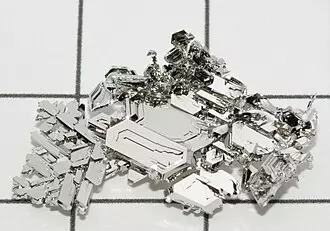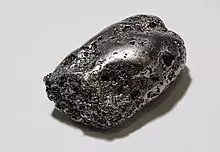Platinum, a remarkable and highly valuable transition metal, holds a special place in the world of chemistry and industry. With its dense, malleable, and highly unreactive nature, platinum has become synonymous with prestige and exclusivity. From its use in jewelry to its vital role in catalytic converters and various industrial applications, platinum has proven its worth time and time again. Let's take a closer look at the fascinating properties and myriad uses of this precious metal.
Unveiling the True Nature of Platinum
Platinum, with the chemical symbol Pt and atomic number 78, belongs to the platinum group of elements and can be found in group 10 of the periodic table. This silvery-white metal derives its name from the Spanish word "platina," meaning "little silver." It is a member of the select few elements that occur naturally as native platinum.

Platinum boasts an impressive list of physical and chemical properties that make it highly sought after. Its resistance to corrosion, even at high temperatures, has earned it the designation of a noble metal. Platinum is also incredibly durable, ensuring that artifacts crafted from this metal stand the test of time.
Unlocking the Versatility of Platinum
Platinum's unique characteristics have led to its wide range of applications across various industries. Let's explore some of the key uses of platinum:
1. Catalyst Extraordinaire
Platinum's most significant contribution lies in its role as a catalyst. Its use in chemical reactions has been documented since the early 19th century, when platinum powder was employed to ignite hydrogen. Nowadays, platinum finds its most vital application in catalytic converters for automobiles. These devices enable the complete combustion of unburned hydrocarbons from vehicle exhaust, converting them into less harmful carbon dioxide and water vapor. Platinum is also instrumental in the petroleum industry, where it catalyzes processes such as the reforming of naphthas to produce high-octane gasoline.
2. Precious Jewelry
Platinum's beauty and rarity make it highly desirable in the realm of jewelry. Its inherent value and prestige have been recognized for centuries, and it is often alloyed with other metals to create exquisite pieces. Jewelers specifically emphasize the minute surface scratches that naturally occur on platinum as a desirable patina, enhancing its allure.
3. Industrial and Electrical Applications
Platinum's unique combination of properties has made it indispensable in various industrial applications. It is used in laboratory equipment, electrical contacts, thermocouples, and electrodes. Platinum's resistance to corrosion and high melting point make it ideal for use in thermogravimetric analysis and the creation of noncorrosive containers. It also plays a vital role in the production of strong permanent magnets when alloyed with cobalt.
4. Medical Marvels
Platinum's biomedical applications are a testament to its versatility. It is used in the manufacture of silicone rubber and gel components for medical implants such as breast implants, joint replacements, and artificial lumbar discs. Platinum drugs like cisplatin, carboplatin, and oxaliplatin are crucial in chemotherapy treatments for various types of cancers.
5. Symbol of Prestige
Platinum's rarity and exclusive nature have made it a symbol of luxury and wealth. In marketing, "platinum" is often associated with high-end products such as credit cards, awards, and limited edition watches. Its timeless appeal and resistance to tarnish make it an ideal choice for prestigious items.
The Journey of Platinum: From Discovery to Production
Platinum's history is intertwined with fascinating tales of exploration and scientific discovery. The metal was first encountered by Spanish explorers in the 16th century, yet its true value and potential remained unrecognized for some time. The breakthrough came in the 18th century when scientists like Antonio de Ulloa and Charles Wood began to unravel the secrets of platinum and its unique properties. The establishment of platinum mining operations in South Africa's Bushveld region in the 20th century solidified its status as a precious metal, with South Africa becoming a global leader in platinum production.

The Future of Platinum
As we look to the future, platinum's role in various industries remains vital. Its exceptional catalytic properties continue to be in high demand, especially in the automotive sector as the world seeks to reduce emissions. Additionally, ongoing research into platinum's use in green energy technologies, such as fuel cells, holds promise for its continued relevance.
In Conclusion
Platinum's allure as a precious and versatile metal has captivated humanity for centuries. Its impressive properties and myriad applications have cemented its position as a highly valued commodity. Whether adorning jewelry, driving innovation in chemical processes, or revolutionizing medical treatments, platinum continues to shape our world in remarkable ways. So, the next time you encounter platinum, take a moment to appreciate the beauty and the brilliance of this extraordinary metal.
References
- Young, Gordon (November 1983). "The Miracle Metal—Platinum". National Geographic. Vol. 164, no. 5. pp. 686-706. ISSN 0027-9358.
- "Platinum at The Periodic Table of Videos (University of Nottingham)"
- NIOSH Pocket Guide to Chemical Hazards - Platinum Centers for Disease Control and Prevention
- "The PGM Database". Archived from the original on 1 July 2019. Retrieved 5 November 2011.
- "Platinum-Group Metals Statistics and Information". United States Geological Survey, National Minerals Information Center.
- International Platinum Group Metals Association.









